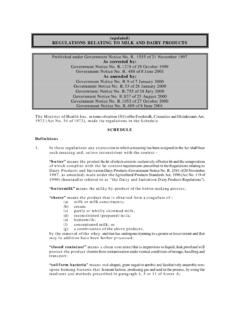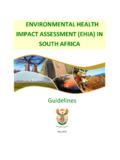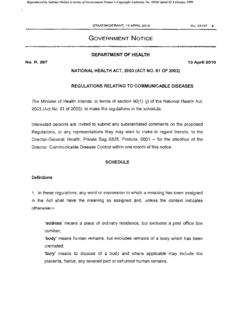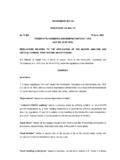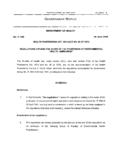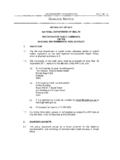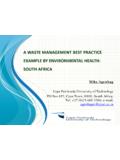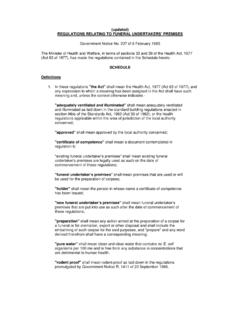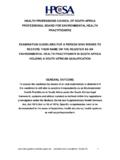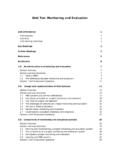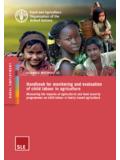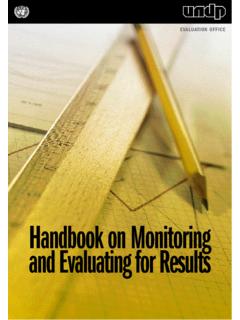Transcription of AIR QUALITY MONITORING AND EVALUATION …
1 AIR QUALITY MONITORING AND EVALUATION TOOLS FOR. HUMAN HEALTH RISK REDUCTION IN SOUTH AFRICA. Caradee Wright1 and Rietha Oosthuizen CSIR Environmental Health Research Group, Pretoria, South Africa. 1. Abstract Air pollution is a serious environmental health threat to humans. Adverse effects range from nausea, difficulty in breathing and skin irritations, to birth defects, immuno-suppression and cancer. Moreover, the severity of health outcomes associated with air pollution exposure is not uniform within populations. In South Africa, the problem is exacerbated since vulnerable communities reside on land in close proximity to pollution sources.
2 New air QUALITY legislation aims to protect the health of South Africans through the implementation of air QUALITY management plans and air QUALITY MONITORING programmes. To assess the effectiveness of these actions and implemented mitigation measures with respect to health outcomes, specific indicators are required. Air QUALITY MONITORING and EVALUATION tools were reviewed to consider their application in South Africa. For effective protection of human health, information on air pollution source, type and concentration is essential, but so are data on the severity and magnitude of adverse health effects both spatially and temporally.
3 Information on population exposure and exposure-health associations derived from epidemiological evidence is also required. While it is acknowledged that ambient air QUALITY limits were established from the documented effects of air pollution exposure on human health, air QUALITY MONITORING and EVALUATION methods for South Africa should also consider the EVALUATION of air QUALITY results in relation to specific health outcomes. Keywords: air pollution, health, population exposure 1. Introduction from nausea, difficulty in breathing and skin irritations, to birth defects, immuno-suppression and Air pollution comprises both indoor and outdoor cancer (Kampa and Castanas, 2008).
4 An increase pollution. Outdoor air pollution is largely a in hospital admissions has been associated with consequence of fossil fuel combustion for transport increased air pollution (Brunekreef and Holgate, and electricity generation, industrial non-fossil fuel 2002), however, the difficulty lies in determining emissions and other human activities. Indoor air which air pollutant is responsible. The air inhaled by pollution usually results from the burning of wood, an individual is a mixture of gases, including air coal or paraffin for space heating, cooking and pollutants such as particulate matter, which may lighting purposes.
5 Differ in composition. Also, exposure may vary by Air pollutants may be grouped into four concentrations, duration and timing, further categories: complicating analysis of actual causation. 1. Gaseous pollutants, sulphur dioxide, Several epidemiological studies have carbon monoxide, ozone. considered the associations between air pollutants 2. Persistent organic pollutants, and adverse health effects (Dockerty, 1993; Pope et dioxins. al., 2002). However, confounding factors, such as 3. Heavy metals, lead, mercury. smoking, and challenges relating to pollution 4. Particulate matter, PM10.
6 Composition and mixture, as well as personal Inhalation of air pollutants is a major exposure, prevent concrete evidence from being environmental health threat. Adverse effects range defined. Despite these uncertainties, sufficient evidence exists to suggest that increased air techniques used, no systematic scoring system was pollution exposure may cause increased mortality developed to rate the QUALITY of the studies. and morbidity in some countries. Nevertheless, by summarizing methods, and by The MONITORING of air QUALITY (AQ) and identifying the strengths and weaknesses of each EVALUATION of results is fundamental for assessing study, a pragmatic working procedure was the nature of population exposure to air pollution.
7 Developed. The aim of an AQ MONITORING programme is to reduce or eliminate air-related diseases and 3. Results and Discussion illnesses through implementation of effective preventative measures to reduce air pollution. Thus, The aim of an M&E framework is to assess whether the ultimate goal of AQ MONITORING and EVALUATION progress is being achieved in line with (M&E) as part of an AQ management programme is predetermined expectations. MONITORING is the to protect the receiving environment and reduce ongoing collection and analysis of data to determine human health risks.
8 Whether goals are being met. EVALUATION is a For effective protection of human health, comprehensive appraisal that considers short- and information on pollution source, type and long-term impacts and exposes what worked, what concentration is essential, but more so are data on did not work and how improvements may be made the severity and magnitude of adverse health for future MONITORING and EVALUATION schedules. A. effects, number of cases attributable to air typical M&E framework may include the following pollution (Mucke, 2000). Also, information on principles: population exposure, and exposure-health contribute towards ensuring objectives of the associations derived from epidemiological evidence, plan are achieved.
9 Is needed. In order to define an AQ M&E framework track progress on implementation of plan;. focusing on health outcomes for South Africa, a identify gaps and weaknesses;. review of available programmes and indicators was plan, prioritise, allocate and manage resources;. made. and ensure sound financial management. 2. Methods A logical M&E approach entails five core steps: input, process, output, outcome and impact Studies published in the English language, 1990 to indicators. Figure 1 represents such a process July 2009 inclusive, were identified through diagrammatically.
10 The framework follows a fairly systematic searches of several computerized linear path, with iterations in the middle phase bibliographic databases, including ScienceDirect incorporating MONITORING and EVALUATION . and Entrez PubMed. For an AQ M&E framework, the largest Combinations of search terms and subject challenge is deciphering impacts and indicators headings were used to search for articles on AQ, thereof, particularly related to health outcomes. AQ MONITORING and AQ EVALUATION . Search terms Previous AQ MONITORING programmes may be included air QUALITY /AQ', AQ measurement', AQ considered lacking in this regard.
